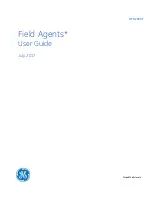
1-5
z
The link-local addresses are used for communication between link-local nodes in neighbor
discovery and stateless autoconfiguration. Packets with link-local source or destination addresses
are not forwarded to other links.
z
IPv6 unicast site-local addresses are similar to private IPv4 addresses. Packets with site-local
source or destination addresses are not forwarded out of the local site (a private network).
z
Loopback address: The unicast address 0:0:0:0:0:0:0:1 (represented in the shortest format as ::1)
is called the loopback address and may never be assigned to any physical interface. Like the
loopback address in IPv4, it may be used by a node to send an IPv6 packet to itself.
z
Unassigned address: The unicast address "::” is called the unassigned address and may not be
assigned to any node. Before acquiring a valid IPv6 address, a node may fill this address in the
source address field of an IPv6 packet. It cannot be used as a destination IPv6 address.
Multicast address
IPv6 multicast addresses listed in
Table 1-2
are reserved for special purpose.
Table 1-2
Reserved IPv6 multicast addresses
Address
Application
FF01::1
Node-local scope all nodes multicast address
FF02::1
Link-local scope all nodes multicast address
FF01::2
Node-local scope all routers multicast address
FF02::2
Link-local scope all routers multicast address
FF05::2
Site-local scope all routers multicast address
Besides, there is another type of multicast address: solicited-node address. A solicited-node multicast
address is used to acquire the link-layer address of a neighbor node on the same link, and is also used
for duplicate address detection (DAD). Each IPv6 unicast or anycast address has a corresponding
solicited-node address. The format of a solicited-node multicast address is as follows:
FF02:0:0:0:0:1:FFXX:XXXX
Where, FF02:0:0:0:0:1:FF is permanent and consists of 104 bits, and XX:XXXX is the last 24 bits of an
IPv6 unicast or anycast address.
Interface identifier in IEEE EUI-64 format
An interface identifier is used to identify a unique interface on a link and is 64 bits long.
Different interfaces generate IEEE EUI-64 format interface identifiers in different ways, which are
described below:
z
IEEE 802 interfaces (such Ethernet interface and VLAN interface): The interface identifier is
derived from the link-layer address (MAC) of the interface. A MAC address is 48 bits long and
therefore, to get the interface identifier, the hexadecimal number FFFE needs to be inserted in the
middle of the MAC address (behind the 24 high-order bits). To ensure the interface identifier
obtained from a MAC address is unique, it is necessary to set the universal/local (U/L) bit (the
seventh high-order bit) to “1”. Thus, an interface identifier in IEEE EUI-64 format is obtained.
Содержание S7902E
Страница 82: ...1 4 DeviceA interface tunnel 1 DeviceA Tunnel1 service loopback group 1 ...
Страница 200: ...1 11 DeviceB display vlan dynamic No dynamic vlans exist ...
Страница 494: ...ii Displaying and Maintaining Tunneling Configuration 1 45 Troubleshooting Tunneling Configuration 1 45 ...
Страница 598: ...ii ...
Страница 1757: ...4 9 ...
Страница 1770: ...6 4 ...
Страница 2017: ...2 11 Figure 2 3 SFTP client interface ...
Страница 2062: ...i Table of Contents 1 URPF Configuration 1 1 URPF Overview 1 1 What is URPF 1 1 How URPF Works 1 1 Configuring URPF 1 2 ...
Страница 2238: ...1 16 DeviceA cfd linktrace service instance 1 mep 1001 target mep 4002 ...
Страница 2442: ...2 4 Set the interval for sending Syslog or trap messages to 20 seconds Device mac address information interval 20 ...
















































